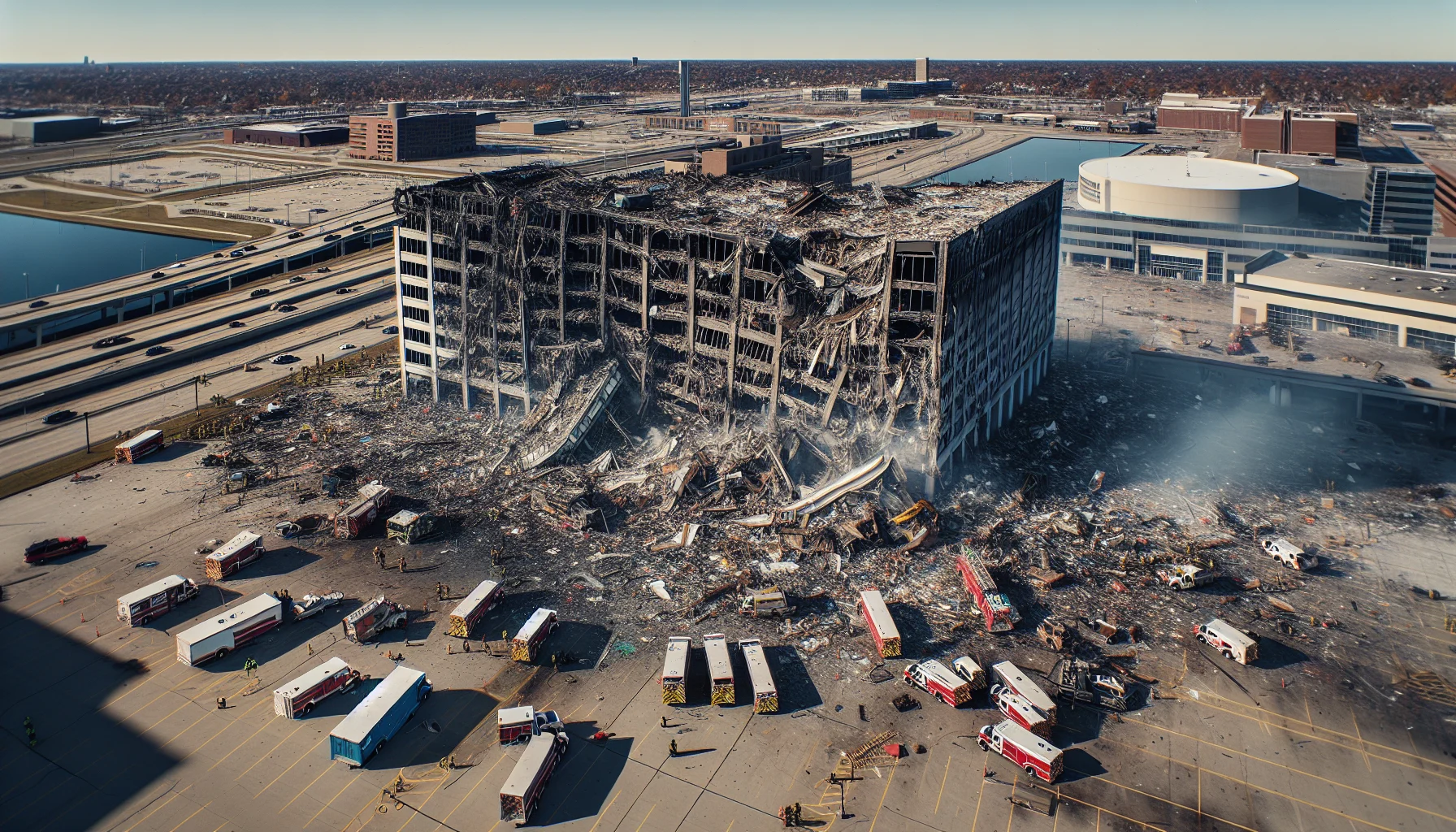
The Oklahoma City Bombing
by: The Calamity Calendar Team
April 19, 1995
The Morning That Changed Everything
April 19, 1995, dawned bright and unassuming over Oklahoma City. As the clock ticked past 9:00 AM, the hum of the city’s routine filled the air. The Alfred P. Murrah Federal Building, bustling with government employees and daycare children, stood at the heart of it all. But within moments, a chilling silence would follow a thunderous explosion, shattering lives and thrusting the nation into mourning and reflection.
Seeds of Discontent
The events leading up to this fateful day were sewn years prior in the deserts of Iraq and the heartland of America. Timothy McVeigh, a decorated Gulf War veteran, returned home not as a war hero relishing civilian life but as a man increasingly at odds with his own government. The handling of the Waco Siege and Ruby Ridge had fueled his growing belief that the American government was tyrannical.
Fueled by this anger, McVeigh, along with his friend Terry Nichols, plotted a devastating attack. Their plan was a calculated response to what McVeigh viewed as the government’s overreach and an inflammatory attempt to awaken fellow citizens to his cause.
A Plan in Motion
Months of meticulous planning and terrifying intent preceded April 19. McVeigh and Nichols acquired materials for their bomb, choosing a deadly mixture of ammonium nitrate fertilizer and nitromethane fuel – a blend infamous for its destructive capabilities. They fashioned a homemade weapon of mass destruction, aiming not just to demolish a building but to deliver a chilling message to the powers that be.
As McVeigh parked the rented Ryder truck filled with explosives in front of the federal building, he would have known that in those final moments before detonation, the quiet and peaceful facade of Oklahoma City was about to be ripped apart.
The Blast and Immediate Aftermath
At precisely 9:02 AM, chaos erupted. The blast was cataclysmic, obliterating the north face of the Murrah Building. Concrete crumpled, steel bent like straw, and over 300 surrounding buildings were damaged or destroyed. The sheer force of the explosion shattered glass in a radius that left the city core resembling a war zone. Cars were ravaged, windows were blown out, and the air was weighted with a thick, acrid smoke.
Thanks for subscribing!
First responders arrived with scarcely a breath’s pause, diving into a scene of utter devastation. The city's emergency personnel were joined by hundreds of volunteers; together, they combed through the wreckage, pulling survivors and comforting the injured. For days that turned into weeks, these brave souls toiled, driven by hope and the human spirit against what often seemed a hopeless endeavor.
The Human Toll
The magnitude of the tragedy was staggering. One hundred sixty-eight souls were lost that day, including 19 innocent children who had no inkling of the storm brewing outside their daycare walls. They became the heart-wrenching symbols of a tragedy born from hate and discontent. An additional 600 people sustained injuries, their lives forever altered by shattered glass and fallen debris.
The physical damage was tallied in dollars: an estimated $652 million. But the real cost defied monetary measurement — a psychological scar etched deep into the fabric of American society.
A Nation’s Response
Grief soon transcended to action. The shockwaves of Oklahoma City resounded throughout the nation, sparking legislative and security changes. In 1996, Congress passed the Antiterrorism and Effective Death Penalty Act, a direct legislative response aimed at preventing such horrors from recurring.
The bombing fundamentally changed how America perceived domestic terrorism, shifting the focus to the threats posed from within its own borders. Security around federal buildings was bolstered, and preventive measures became far more visible, an eerie new normal for a nation grappling with its own vulnerability.
Justice Served
Justice too found its course. Shortly after the bombing, McVeigh was apprehended on unrelated charges. As the full scope of his involvement came to light, he stood trial for a nation to see, found guilty, and sentenced to death. On June 11, 2001, he was executed, offering little solace but closing one chapter on this tragic narrative.
Terry Nichols, the accomplice in this grim episode, escaped the death penalty but was sentenced to life without parole. Both remain reminders of the far-reaching consequences of hatred and radical disillusionment.
Looking Forward
The Oklahoma City Bombing, while an indelible part of history, serves a dual role; it’s a cautionary tale and a call to reflection. As a society, it challenges citizens to balance the safeguard of freedoms with vigilance against extremism, drawing a delicate line between liberty and security.
Years have passed since that tragic April morning, but the shadows of that day linger. The faces of the victims, particularly the innocent children, remain a poignant reminder of the human cost of fanaticism. Their memories implore us to forge a path steered by compassion, understanding, and the belief in a world where such tragedies cease to occur.
Stay in the Loop!
Become a Calamity Insider and get exclusive Calamity Calendar updates delivered straight to your inbox.
Thanks! You're now subscribed.